Photographs by Lenard Smith
On an early-December morning in California’s Mojave Desert, the Geoscience Support Services geohydrologist Logan Wicks squats in the sand and fiddles with a broken white pipe. Here on a sandy road off Route 66, past miles of scrubby creosote and spiny mesquite, Wicks monitors the pumps and pipes of a promising desert extraction project.
But he’s not looking for oil or gas. Crouching under the shade of a 10-foot lemon tree, at the edge of a citrus orchard that spans hundreds of acres, Wicks is here for water.
A fine stream bursts from the plastic pipe, forming a rainbow-crested arc before hitting the hot sand. Wicks pushes his Oakley sunglasses on top of his head, rubs the short dark bristles on his upper lip, and smiles.
“There’s a hell of a lot more where that came from,” he says, nodding at the spray.
In fact, there might be as much as 34 million acre-feet, or enough to flood 34 million acres one foot deep. Wicks and his colleagues work on behalf of Cadiz, Inc., which has drilled 300 feet below the desert’s surface to reach the massive Fenner aquifer. Today, the nine water wells on Cadiz Ranch support a 3,500-acre oasis of lemons, hemp, and other crops. But the company’s ranch taps only a tiny fraction of the aquifer, which extends 700 square miles between two of California’s mountain ranges, the New York Mountains and the Old Woman Mountains.
If it seems improbable that so much water lies under the desert, it is. Just 20 miles from Cadiz Ranch, the ghost town of Bagdad still holds the record for the driest spell in American history: between 1912 and 1914, this town went 767 consecutive days without rain. The wetter climate that filled the Fenner aquifer ended about 10,000 years ago.
Cadiz, Inc., is drilling for what some call “fossil water”—water that has been buried deep in the Earth for millennia. According to new radiocarbon and other isotopic age-dating tools, the water in this aquifer hit the surface as rain during the last Ice Age, when mammoths still lived here. In the current desert climate, this groundwater will never replenish itself, at least not on a human time scale. Once we use it, it’s never coming back. And unless the aquifer is actively refilled, its depletion could have serious consequences for ecosystems aboveground.
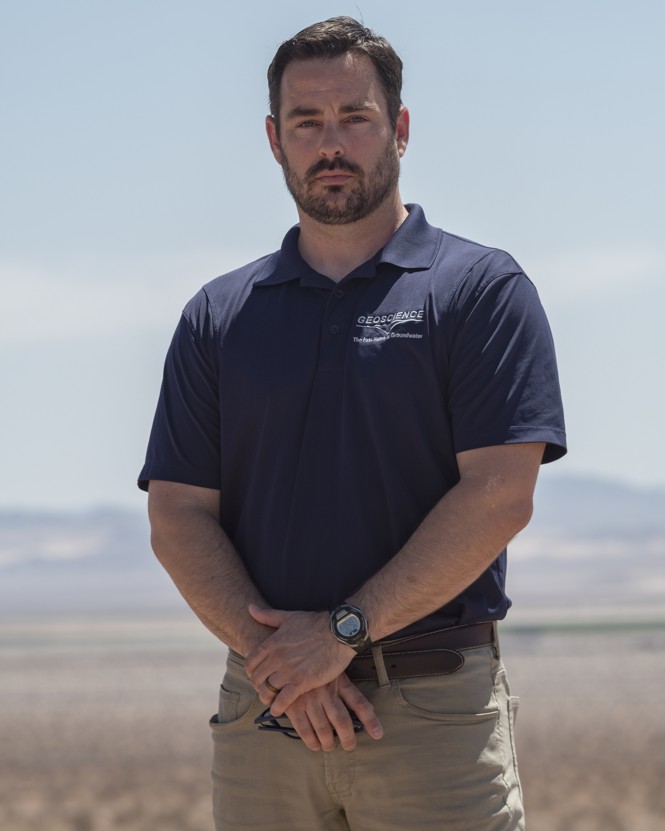
Fossil water, also called paleowater, is the largest nonfrozen freshwater resource on the planet. But for most of human history, few knew it existed. In the 1950s, oil prospectors began turning up vast, untouched supplies of water, often hidden under deserts. Like oil deposits, the buried water inspired opportunists: In Libya, the dictator Muammar Qaddafi tapped the Nubian sandstone aquifer to power his Great Man-Made River, one of the world’s largest irrigation projects. In India, desert aquifers fed the Green Revolution, transforming the country into the world’s second-largest producer of wheat. In California in 1983, NASA imagery revealing the size of the Fenner aquifer attracted the British entrepreneur Keith Brackpool, who bought the land, co-founded Cadiz, Inc., and started digging wells.
The company’s plan for the aquifer goes far beyond lemons and hemp: Cadiz intends to channel ancient water through two pipelines that would cross hundreds of miles of desert to deliver water to Southern California water districts. The plan has persisted through a decade of political and legal challenges.
That doesn’t mean the Cadiz project and others like it are justified, argue a coalition of anthropologists, philosophers, lawyers, and hydrologists. They say existing laws and regulations don’t address the ethics of water use, and that water management in the age of climate change requires not just new pipes, but also new paradigms.
The Fenner aquifer is “an emergency supply,” the University of New Mexico anthropologist David Groenfeldt says. “How can we possibly justify using it now?”
The rainstorms that pounded the California coast this month don’t change the fact that the region’s climate is drying and warming, and that as a consequence, the state is running out of water––not just for lawns and crops and households, but to protect homes and lives from the region’s ever-larger wildfires. With their communities facing disaster, many western water managers ask: How can we not?
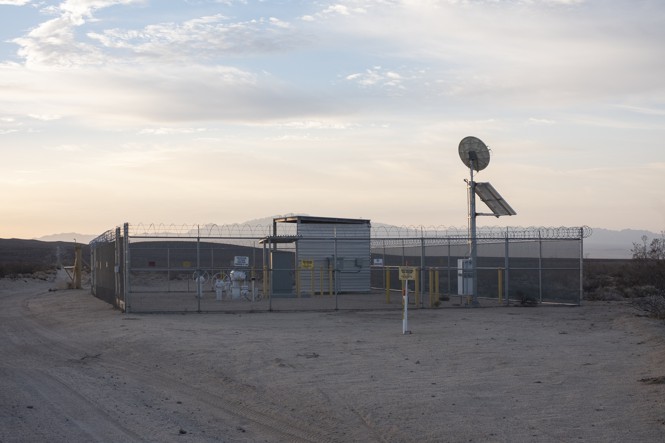
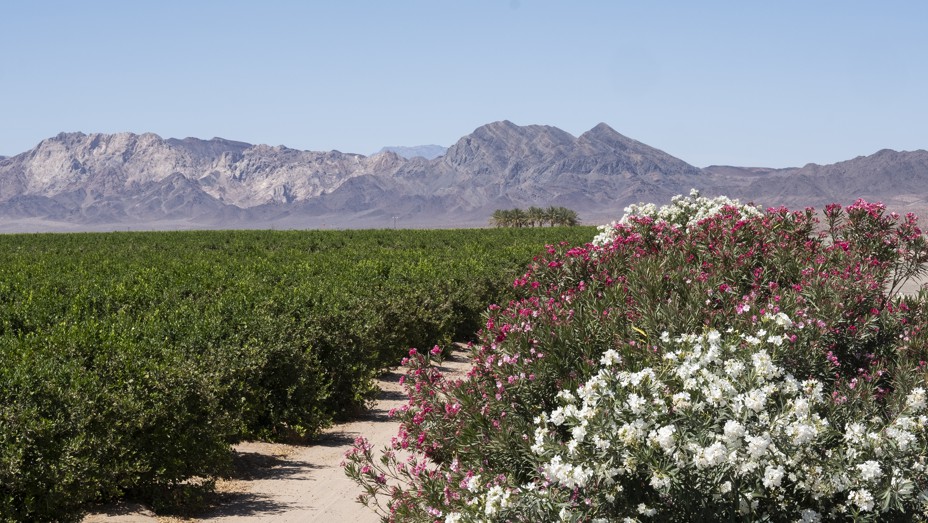
When you turn on your tap to brush your teeth in the morning, do you know where that water comes from? Do you feel good about using it? What would change your mind?
These are the kinds of questions that interest David Groenfeldt. But when he began consulting on water projects in Sri Lanka in the mid-1980s, nobody else seemed to be asking them. No matter where he worked, from the World Bank to his hometown of Santa Fe, New Mexico, he saw that many decisions with enormous consequences—about who should get water, when, and for what––were stripped of moral context.
In most modern states, we pretend that water is an abstract utility, and that our relationship to it is primarily economic. But economic decisions have human consequences: While infrastructure investments have enabled people in most wealthy societies to use far more water than they need, a third of the globe’s population lacks access to clean drinking water. In 2020, the Chicago Mercantile Exchange created the first futures market for water, allowing investors to gamble on future scarcity.
“A commodity entered into a capitalist system always creates winners and losers,” Groenfeldt says. “When it comes to water, the losers are the ones who can’t self-advocate: ecosystems, the marginalized, and future generations.”
Groenfeldt wasn’t alone in wanting to introduce moral considerations into water decision making. At the 2003 World Water Forum, the Indigenous Peoples Kyoto Water Declaration challenged the “dominant paradigm, policies, and programs on water development,” including the commodification of water. At the same conference, scholars from a UNESCO working group established in 1998 presented their first examination of water ethics. In 2010, the United Nations declared access to clean drinking water to be a universal human right.
When Groenfeldt endeavored to apply moral principles to water management in Santa Fe, local policy makers dismissed his ideas as impractical. So he secured funding from the California-based Kalliopeia Foundation (“dedicated to reconnecting ecology, culture, and spirituality”) to start the Water-Culture Institute. Soon, like-minded colleagues found him. Neelke Doorn, a Dutch professor of philosophy, had started her career as a hydraulic engineer but had grown frustrated by the self-proclaimed objectivity of her colleagues, and switched fields. The Oregon-based water lawyer Susan Smith had begun working on water issues with the World Council of Churches because “religious institutions were the only ones taking water justice seriously.” Indigenous leaders from the United States and Canada who had long championed water protection for spiritual reasons joined the ranks. At the 2015 World Water Forum in South Korea, some of these thinkers presented the “Water Ethics Charter,” a set of open-ended guidelines meant to help communities bring environmental, social, and spiritual values into their choices—to “provide a moral basis for water management decisions which cannot be accurately valued in financial terms and are not mandated legally.”
Though the guidelines stop short of offering clear dos and don’ts, they can alter the discussion, Groenfeldt says. For example, a corn farm in arid Kansas might be just as profitable as one in comparatively wet Iowa. But the Kansas farm might require 45 times more irrigated water, depleting groundwater that local communities depend on. Similarly, citizens voting on a new river-diversion project might initially favor cheaper water. But consideration of the recreational, aesthetic, and environmental benefits of the undepleted river might change their vote.
“We take implicit consequences and make them explicit,” Groenfeldt says.
The authors of the Water Ethics Charter also stressed that water experts have their own moral obligation: “to generate knowledge about water in all its aspects and attend to the governance of that water knowledge.” In other words, experts must provide us with the best available information, including where our water comes from and how much is left. Which means that now, they are asking us to consider the consequences of sipping on ancient water.
More than 10,000 years ago, a winter storm gathered over the icy shoulders of the Eastern Mojave’s New York Mountains. The falling snow might have landed on pine needles, or the bristly backs of giant ground sloths. When these crystals melted, some of the resulting water joined the roaring Mojave River and sped north to fill Death Valley’s lake. Some of the lake water seeped into the rich soil, then trickled through the pores of the sedimentary rock. Eventually, it stopped exchanging gases with the atmosphere. In a sense, it became a fossil, storing traces of the Pleistocene climate for the next hundred centuries.
At the Scripps Institution of Oceanography in San Diego, California, the doctoral candidate Jessica Ng is working to decode these ancient molecules. Down an open-air, salt-scented concrete walkway, inside a cramped lab filled with whirring metal instruments, Ng practices cutting-edge groundwater paleoclimatology.
“I guess most people aren’t thinking about the last Ice Age every day,” Ng says, adjusting her blocky, clear-rimmed glasses.
In the decades after World War II, scientists realized that the detonation of atomic bombs had left detectable levels of the hydrogen isotope tritium in the planet’s atmosphere—and in its rainfall. In the 1970s, researchers found that some very deep groundwater was missing this isotope, because it had never been exposed to the modern atmosphere. In subsequent decades, scientists refined their water-dating techniques, identifying isotopes that decay at different rates in water. Traces of argon-39 in groundwater suggest that the water fell from the sky between 50 and 1,000 years ago. Carbon-14 indicates ages between 1,000 years and 30,000 years. In the past five years or so, krypton-81 has shown that some water—such as that in Australia’s Great Artesian Basin—is an astonishing 200,000 years old. Since the majority of the world’s groundwater hasn’t been tested for all of these isotopes, new data are constantly emerging.
In Ng’s lab and others like it, these ancient water molecules can provide snapshots of past climates—their land temperatures, their precipitation type, and the depth of their water tables. They also demonstrate that not all groundwater is created equal. Water that is one year old is typically close to the surface, and if it’s extracted it will likely be replenished by the following year’s rainfall. Water that’s hundreds or thousands of years old is still moving through a hydrological cycle, but it’s not a cycle that you—or your kids, or your grandkids—will live to see completed. From a human perspective, this groundwater isn’t renewable; if you’re extracting it without restoring what you took, you’re mining it.
In 2019, scientists at the Lawrence Livermore National Laboratory and California State University at East Bay published the first comprehensive age study of California groundwater, surveying more than 2,000 wells, and found that approximately 7 percent of the samples contained isotopes associated with water that is at least 10,000 years old. In the Central Valley, where worsening droughts have led many large-scale farms to invest in deeper wells, renewable groundwater appears to be especially scarce.
Standing at the lab’s wide sink, Ng hefts a stainless-steel bulb-shaped flask containing ancient water from a municipal well in Tucson, Arizona. With a practiced swoop, she overturns the flask and opens a valve protruding from its side. A thin stream shoots out, hitting the rusted sink rim. I run my fingers under the stream, feeling the familiar pressure against my skin. It looks, and feels, like regular water. Without a mass spectrometer, it’s impossible to tell it’s a fossil.
In March 1977, amid a record-setting drought, the economic approach to water management faced a critic from within the system. On a balmy day in Los Angeles, the hydrologist Luna Leopold—the son of the famed American conservationist Aldo Leopold—stood before California Governor Jerry Brown and made an impassioned case for a radical reduction in water use.
Luna Leopold had been appointed as the first chief hydrologist of the United States Geological Survey (USGS) in 1963, and had come to realize that the country faced a failure in water governance. Since President Theodore Roosevelt created the Bureau of Reclamation at the beginning of the 20th century, the American West’s lack of rainfall had been treated as an engineering problem, and dams, reservoirs, and canals as the solutions. Any water not put to “beneficial use” in homes, farms, or factories was considered wasted. To this day, the bureau remains the nation’s largest water wholesaler, irrigating 140,000 farms.
In his Los Angeles speech, Leopold described the attempts by the United States to “improve” rivers and hydrologic systems as “deranged,” and called for a gentler approach to management. He acknowledged that his “philosophic view,” which characterized a river as an “organism,” would strike some as “impractical idealism.” But he pleaded with the governor to plan for scarcity and to protect “especially those remnants of the ice-age groundwater bodies not being recharged now.” The young governor ignored Leopold’s entreaties, and took no action to protect these ancient aquifers. Five years later, Cadiz, Inc., bought thousands of acres in the Mojave Desert—along with their accompanying groundwater rights.
In 2017, 40 years after Leopold’s speech, Jerry Brown had returned to the governor’s office during another record-setting drought, and the ethics of western hydrology seemed even more deeply entrenched. Farmers whose shares of the Colorado River depended on demonstrating “beneficial use” flooded their fields with the precious resource. It had also become clear that the century-old measurements used to divide the Colorado River among seven states and Mexico had been taken in an unusually wet period. A 2015 ProPublica analysis found that, since 2001, the average annual legal claim to Colorado River water had exceeded the existing supply by 1.4 trillion gallons. In 2021, for the first time, the federal government cut allocations from Lake Mead, the largest reservoir on the Colorado River; this past July, the reservoir dropped to 27 percent of its capacity—its lowest level since 1937, when it was still being filled. In the current climate, communities hold rights to water that amounts to little more than myth.
Like today’s water ethicists, Leopold knew that nobody has a purely economic relationship with water. Even as supplies shrink, our biological demand endures, and will accept no substitutes.
We’re thirsty, we might say. We need it.
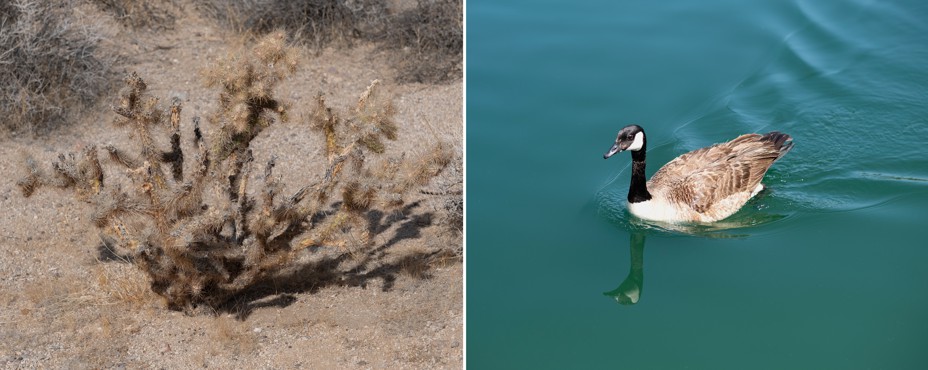
In the Orange County suburb of Rancho Santa Margarita, the path around its 31-million-gallon man-made lake is often crowded with mothers pushing strollers and joggers being pulled by dogs. In this arid landscape, wealth is often expressed in water, and it spills from fountains, soaks lawns, and fills private swimming pools. If Cadiz, Inc., obtains final federal approvals for the shorter of its two proposed pipelines, 1.6 billion additional gallons of water will arrive here each year for the next 50 years, pumped from the depths of the Mojave Desert.
“We look at a water supply like an investment portfolio,” Dan Ferons, the general manager of the Santa Margarita Water District, says. “We need to diversify.”
Ferons feels an acute responsibility to invest wisely, because more than 165,000 people in eight communities, including Rancho Santa Margarita, rely on his district’s water. Though the district buys water from the Colorado River via the Municipal Water District of Orange County, it is “paper water”—an abstraction delineated in a legal document. As the Colorado River Basin gets drier, the paper water represents less and less real water, and the water it does represent is getting more expensive: Since Ferons started working for the district in the 1980s, scarcity has increased the price of Colorado River water fivefold. In response to these mounting costs, Santa Margarita has become a leader in water recycling; now, a quarter of all irrigated water in the district is recycled wastewater, and the district wants to recycle 100 percent of its wastewater by 2030. With each successive drought, however, the appeal of the Cadiz project grows, too.
“There’s more in this whole desert valley than in all of Lake Mead,” Ferons says. “It’s out there going to waste.”
Preventing waste is central to Cadiz’s moral case for its project. Susan Kennedy, who replaced Brackpool as executive chair in February 2022, argues that the project will conserve water that would otherwise evaporate from dry salt beds. She says the project’s two pipelines—one running 43 miles south from the Fenner aquifer to the Colorado River aqueduct and one 220 miles north to the California aqueduct—will allow water to be “traded and transferred between the state’s major water systems,” benefiting Californians who currently lack access to water. To her, the project represents nothing less than the future of California’s water infrastructure.
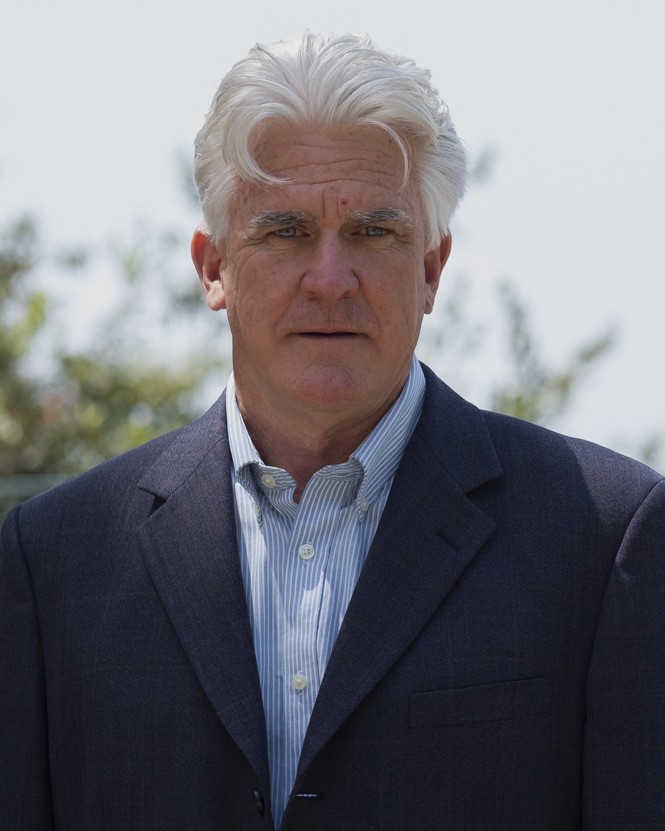
In 2011, the Santa Margarita Water District led the project’s environmental review, which, Kennedy says, along with more than a decade of other reviews, proved that the project will cause “zero harm.” During the 2011 review, however, the National Park Service expressed concern about the draft report’s use of a 2010 Cadiz-funded “recharge estimate”—the rate at which precipitation, snowmelt, and other natural water sources refill the aquifer—was between three and 16 times higher than a range estimated by the U.S. Geological Survey in 2000. In fact, nearly 20 estimates over almost three decades have produced different results, each of which tells its own story about the regional water cycle. The company-funded studies have consistently estimated recharge rates that are orders of magnitude higher than those produced by independent and USGS research.
Kennedy maintains that the figures produced for the environmental review represent the most recent and thorough analysis of the region. The environmental firm CH2M Hill (now called CH2M), which produced the 2010 estimates for the company, has noted that they used freshly collected field data and a new model created by the USGS itself. Kennedy points out that many previous models didn’t collect local data; they based their projections on data from similar watersheds. “The difference in estimates comes down to actual data versus no data and updated versus older modeling tools,” she says.
Still, the USGS hydrogeologist John Izbicki, who contributed to the 2000 estimates, says the specificity of some of the new data likely led to overestimations—when, for example, a single high measurement was projected over an entire region. He maintains that the company-supported numbers are “unrealistic” when compared to studies of similar watersheds, and do not reflect “accepted scientific values in the published literature.”
The 2000 and 2010 recharge estimates “are far, far too greatly different to be reasonable,” Izbicki says. (On a more basic level, he points out that evaporation is part of the hydrological cycle, and that water “going to waste” in the salt beds likely benefits the ecosystem and public health by helping to lock dust in place.)
Kennedy is, of course, familiar with the arguments that this particular source of water should be left untouched, and the criticisms that even the highest recharge estimates would not balance the company’s planned extraction rate. But she says the company will not be “mining” water, which is withdrawing groundwater “in excess of natural recharge.” Instead, Kennedy says, Cadiz will largely be pumping “surplus” water flowing into dry surface-lake beds that would “otherwise evaporate.” In fact, she says, the ultimate goal of the project is “groundwater storage,” because drawing down the aquifer will create space that they expect to sell. Aquifers and other underground locations can serve as evaporation-safe “banks” for surplus water; with water evaporating from California’s reservoirs at record rates, the state has increased investments in water banks.
“We’re not going to build any more dams,” Kennedy says. “What the state is missing is storage.”
But Jeffrey Mount, a senior fellow at the Public Policy Institute of California, says that while the state does need to invest in water-storage infrastructure, it already has plenty of underground storage space. In the San Joaquin Valley alone, groundwater pumping has made room for more than 100 million acre-feet, enough to accommodate all of California’s runoff for three consecutive years. Given that context, Mount says, Cadiz’s strategy looks like an expensive, resource-heavy way to create unnecessary space.
So far, the company has only sold rights to “store” water from the aquifer itself—essentially, contract holders will pay an extra $1,500 per acre-foot to hold on to any aquifer water that they purchased but didn’t use in a given year. Eventually, the company hopes to attract business from water wholesalers, which would then sell space to agencies that need to store surplus Colorado River water. (Ironically, a project designed to fill a river’s chronic shortfall is counting on its future abundance.)
In 2014, after six separate legal challenges from the Center for Biological Diversity, the National Parks Conservation Association, and the salt-production company Tetra Technologies, a state superior court upheld the environmental approvals. Still, the Cadiz project continues to be a political flashpoint. In 2017, President Donald Trump’s secretary of the Department of the Interior, David Bernhardt, reversed an Obama-era policy and affirmed the legality of the southern pipeline’s path on a railroad right of way. In 2019, encouraged by Senator Dianne Feinstein, a longtime project opponent, the California state senate passed a bill requiring all desert groundwater-extraction projects to undergo separate review by the State Lands Commission, and Governor Gavin Newsom signed the bill into law. In 2020, weeks before Joe Biden took office, the Bureau of Land Management approved and transferred crucial rights of way for the northern pipeline, rights that the company finished acquiring in 2021.
In the meantime, plenty of Californians—and not just rich ones, Kennedy says—are thirsting for the water the company promises to provide. Though the Santa Margarita Water District was the project’s first contract, 11 other utilities now hold contracts or options on a substantial share of the water, including some that serve low-income areas. The company’s northern pipeline would pass through 23 low-income communities in the San Joaquin Valley, where local aquifers are already critically overdrafted and existing water infrastructure is scarce.
The environmental attorney Jennifer Hernandez argues that Cadiz could help remedy historic inequities in California’s water infrastructure. In March 2022, her firm filed an amicus brief on behalf of several Southern California housing, civil-rights, and community-development organizations, opposing lawsuits that have delayed the project. Each company contract contains an “escalator clause” that allows for a 5 percent annual price increase over the 50 years of the contract. If the company started delivering water today, it would cost about $1,400 per acre-foot. (For comparison, this year the Metropolitan Water District charged $1,143 per acre-foot for imported Colorado River water.) Every month of delay, the authors of the brief wrote, “results in the cost of water to disadvantaged communities increasing.”
Kennedy says the company will deliver some of its water at cost, in amounts calculated using the percentage of “disadvantaged communities”—those whose median incomes are 80 percent or less of the statewide median—served by each of its contractors. Mount, however, is skeptical that any version of the project could produce affordable water. Pumping from deep wells is extremely energy intensive, as is moving water uphill over long distances. “It’s disingenuous to say you’ll deliver water ‘at cost’ when that cost is prohibitively high,” Mount says. “I’d be surprised if this water is cheaper than other options.”
One alternative, Mount says, is consolidation: In 2015, the state offered financial incentives to large water suppliers to absorb small ones in disadvantaged areas, since larger suppliers have the resources to invest in reuse and recycling and can divide costs among more ratepayers. A second option is demand reduction: A 2022 study from the Pacific Institute found that for the past 40 years, the state has used less water overall even as its population has grown. The same study found that more investments in efficient showers, toilets, and pipes could reduce water use by a further 30 to 48 percent statewide. Finally, in districts that are dependent on groundwater and lacking in infrastructure, Mount says, new management laws are kickstarting aquifer-recharge projects and helping to restore groundwater supplies. With these alternatives, he says, California could increase water access and affordability without digging a single new well.
The Fenner aquifer’s relative isolation, Mount says, is key to the project’s political survival. The draining of the Owens Valley aquifer in the early 1900s to benefit the city of Los Angeles, 250 miles away, is remembered as an act of water theft. “We just don’t, on a large scale, mine groundwater and pump it somewhere else anymore,” Mount says. “Even if everyone is paid for it.” With no obvious human communities dependent on the Fenner aquifer for survival, he says, it feels more acceptable to take it.
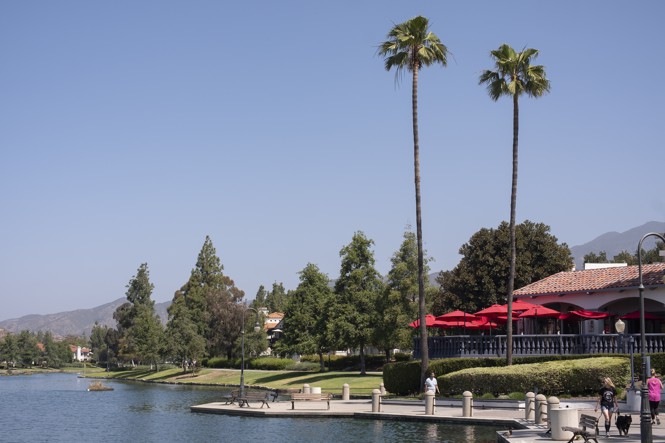
But what counts as dependence? What kind of survival? The leaders of the Chemehuevi, or Nuwu, tribe oppose Cadiz, Inc.’s project in part because of the aquifer’s possible connection to Bonanza Spring, a rare groundwater source supporting a wetland on a ridge above Cadiz Valley. The spring provides water to many protected species, including the desert tortoise and bighorn sheep, and is a sacred site for the Chemehuevi and other desert tribes—in part because it is a focal point of the Nuwuvi (Southern Paiute) Salt Song Trail, an ancient ceremonial loop through the desert.
The trail covers roughly 1,000 miles, and its 142 songs, each sung at a specific location, form a sacred cultural map. In 2016, President Barack Obama described the tradition in his proclamation of the Mojave Trails National Monument. Matthew Leivas Sr., the Chemehuevi chief and a Salt Song singer, keeps a worn printout of that proclamation folded in his backpack. “Our people always knew water, we talked to it,” Leivas says. “And we know that spring is sacred, holy—if anything, last-resort water.”
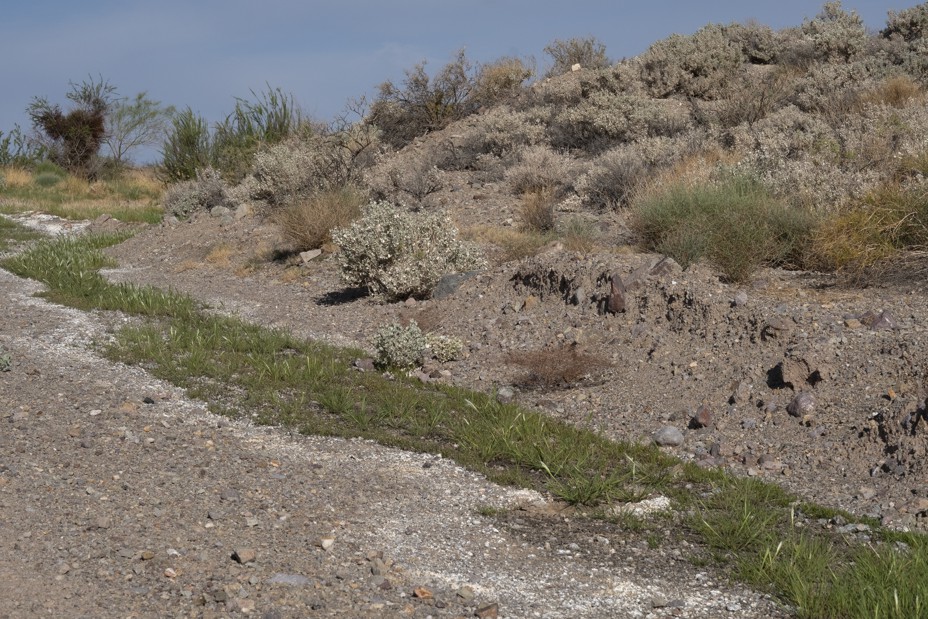
For those morally opposed to extracting what they call fossil water, the potential impact on Bonanza Spring offers the strongest legal case against the project. For those in support of the project, disproving this connection provides both a moral and legal defense. Cadiz’s environmental-impact report concluded that “the Project will not likely have any impact on springs,” linking their flow to rainfall at higher elevations. In comments, the National Park Service called this an “a priori” assumption unsupported by sufficient data. Since then, a company-funded study, reviewed by other scientists but not published in a peer-reviewed journal, identified fault zones establishing “no hydraulic connection” between the bodies of water. Soon after, an analysis funded by the Mojave Desert Land Trust and published in the peer-reviewed journal Hydrology concluded that a connection to the aquifer was likely. Two other studies (also supported in part by the Mojave Desert Land Trust), published in 2018 and 2020 in the journal Environmental Forensics, suggested that drawing down the aquifer could significantly harm the spring.
While Susan Kennedy, Cadiz’s executive chair, calls the studies “opponent funded” and “refuted science”—pointing to several researchers who have disputed their conclusions—John Izbicki of the USGS describes the findings as “reasonable.” He points out that the Hydrology analysis, which was based in part on regional data collected by his agency, confirmed the existence of a unique, ancient spring source dating back 15,500 years, and while it did not pinpoint that source precisely, he says, that could be accomplished with a little more data collection. But his agency has limited research funds, and other projects have taken priority. Plus, data are unlikely to settle the larger question of when it is ethically permissible to extract extremely old water, if it ever is.
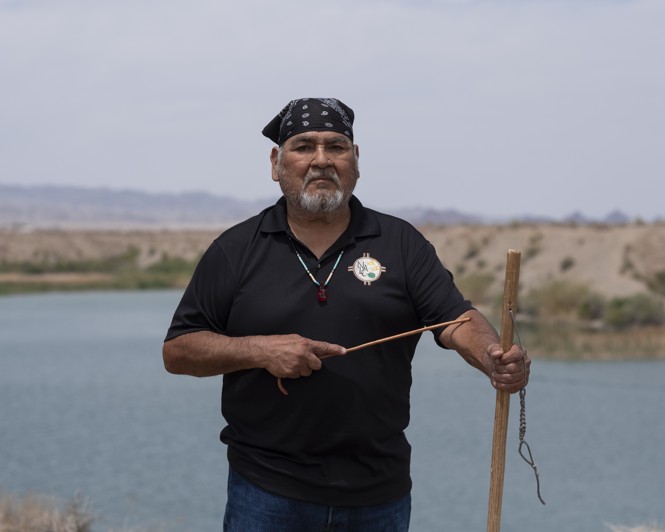
Long before scientists came up with isotopic dating, the Chemehuevi described Bonanza Spring as ancient. To the Chemehuevi, Leivas says, it makes intuitive sense: Any water flowing in that section of the desert must come from very old layers of the Earth. For this reason, tribal members have always drunk it sparingly.
Since 2021, Leivas and other tribe members, the Native American Land Conservancy, and the National Parks Conservation Association have waged a legal battle against the Cadiz project. (The Torres Martinez Desert Cahuilla Indians, to whom the company has pledged an annual donation of close to 500 million gallons of water, support the project.) People tend to talk about colonialism in terms of land, Leivas says. But his tribe’s story of displacement and decimation is hydrological. In 1853, the federal government declared Chemehuevi land to be public domain; more than six decades later, it granted the tribe 36,000 acres alongside the Colorado River. But within 30 years, the Bureau of Reclamation had seized more than a fifth of that land to build Parker Dam, the dam that created Lake Havasu. The Metropolitan Water District of Southern California both lobbied for and funded the dam, and still holds the rights to most of the lake’s water. The Chemehuevi word for water is pa. For the white man, Leivas says, water means money. And that can lead to short-sightedness.
“Our tribe knows that the Cadiz project is not a conservation project,” James F. Wood, the Chemehuevi tribal chair, wrote in a 2018 statement. “Its aggressive pumping of water fails to save water for our children, grandchildren up to the Seventh Generation.”
In 2004, the authors of the UNESCO water-ethics report took up the issue of what they called “the development of non-renewable groundwater resources.” They acknowledged that “some specialists” believed that the extraction of very old water should be “socially rejected, if not legally prohibited.” They proposed, however, that an arid society could ethically use this water if the social benefits outweighed environmental costs, the water would last at least 50 years, and the community had “envisaged” a future technological alternative.
More recently, ethicists in anthropologist David Groenfeldt’s circle have taken a harder line. The Oregon water-law professor Susan Smith points out that new technologies tend to create new environmental problems. For instance, water desalination consumes enormous amounts of fossil fuels, and its effect on marine environments is unclear. To Smith and others, depleting current resources to maintain the status quo fails to recognize the inherent unsustainability of existing systems.
“Tech optimists tend to be Pollyanna-ish about this stuff,” she said. “They don’t have the right humility about human limitations.”
The science of water dating is young, but it is starting to introduce ethical considerations into California water decisions. In the high desert city of Victorville, where years of overpumping have left groundwater supplies dangerously low, Izbicki has provided his age data to water managers. “When you tell people their water is 10,000 years old, that changes the conversation,” he says. The community focused on conserving that supply, and began recharging the aquifer to sustain it—one of the three alternatives to the Cadiz project noted by the water-policy expert Jeffrey Mount. Since Izbicki’s first studies of Victorville water in 1995, Mount says, the water table has stabilized. Izbicki has since provided data to three other high-desert communities to help them manage their groundwater.
But any real ethical shift must be supported by changes in policy. And until recently, California lawmakers chose not to regulate groundwater at all, instead leaving it up to property owners to adjudicate. (The Cadiz project triggered a state environmental review because it needed local permits for pipelines located outside its property.) Not until 2020 did the Sustainable Groundwater Management Act mandate that communities with competing rights to an aquifer work together to come up with a plan for its sustainable use—which means they must prove that any extraction won’t outpace the aquifer’s replenishment, natural or otherwise.
Age dating can help water managers provide that proof. In 2019, Jean Moran, a hydrologist at Cal State East Bay, co-authored the state’s first groundwater-age analysis, based on samples from more than 4,000 municipal and private wells statewide. Since that study, age data have contributed to new, better-informed management plans in areas like Orange, Santa Clara, and Alameda Counties. Now, with support from the California State Water Board under the new law, Moran and her colleagues are developing a “decision support tool” that walks water managers through the likely long-term impacts of their choices. Earlier this year, the board expanded the pilot project statewide.
The Sustainable Groundwater Management Act, which prioritizes the restoration of highly stressed aquifers, does not extend to the comparatively untouched Fenner Basin. In cases like the Cadiz project, Mount says, the consequences of extraction may lie far in the future—too far for our existing legal system to mitigate. Debates over climate policy have raised similar questions of intergenerational responsibility; in 2021, the German Supreme Court ruled that the nation’s climate policy violated the constitutional rights of future generations and ordered legislators to amend it. In the world’s most arid regions, it’s possible to imagine similar mandates for water.
The long failure to seriously consider the ethics of groundwater management, Groenfeldt says, is a symptom of a larger misunderstanding. When we think about water scarcity, it’s easier to picture a dry lake bed than a drained aquifer. Although groundwater constitutes the vast majority of the planet’s nonfrozen freshwater resources, most people know little about it, perhaps imagining that it collects in underground caverns or lakes. In truth, an aquifer is more like a porous sponge, a network of geologic and chemical interactions that defies reduction to simple formulas. Mount says the current crisis will force us to confront this collective ignorance.
“We’re at this once-a-century transition in water management,” Mount says. “The next generation after me is going to be obsessed with groundwater.”
To convey groundwater’s complexities, future water managers might need to restore “paper water” to its terrestrial context. In studies of aquifer management in her home country of Costa Rica, the University of Southern California anthropologist Andrea Ballestero has seen how detailed conversations about the geology—and vulnerability—of local aquifers can anchor otherwise abstract decisions in a unique and familiar place. Add age data, she says, and decisions begin to be anchored in time as well.
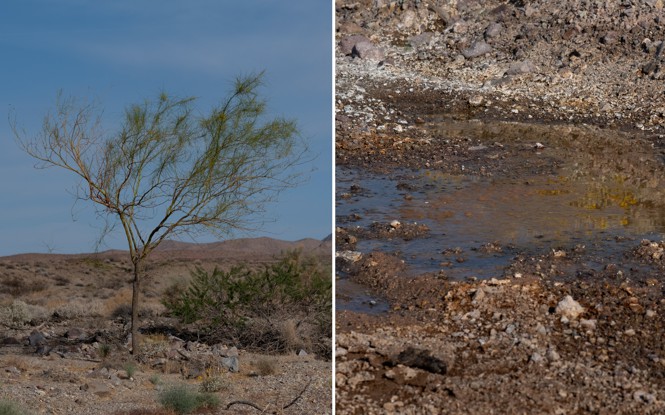
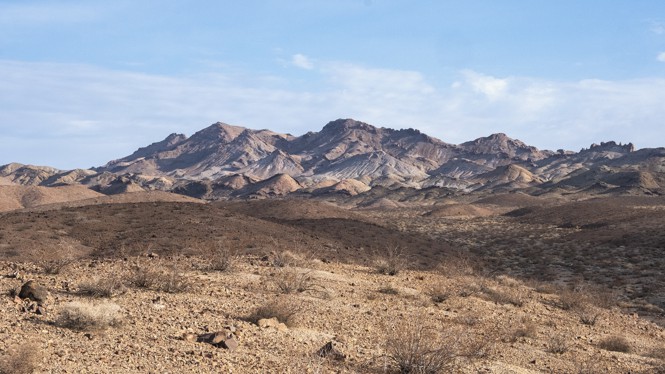
On the day I’m scheduled to go to Bonanza Spring, Matthew Leivas isn’t feeling well, so I go with his good friend Chris Clarke, a member of the National Parks Conservation Association staff. On our way there, Clarke points to a group of brown, spiky-crowned yucca stalks, 40 feet across with a dozen lolling heads.
“That’s probably around 4,000 years old,” he says. Yucca grow in clonal clusters, Clarke explains, and the bigger the cluster, the older the plant roots. I stick my head out the window for a closer look. When that yucca germinated, I think, humans were still hunting big game across the desert, but Ice Age rainfall flowing below the ground had barely completed half its journey through the Fenner aquifer.
About 45 minutes later, after bumping up a steep slope at a 45-degree angle, I step out of the car and hear the spring: the buzz of insects, the chatter of birds, and the distant, unmistakable trill of moving water. After the long stretch of sand and cracked earth, I blink in surprise like a cartoon character. Below us is a small valley filled with reedy green cattails, bare-limbed black cottonwoods, and red and yellow willows.
We tramp downward through slick grasses and mud, skirting coyote scat and bighorn-sheep tracks. Pushing through a stand of cattails, we reach a split rock spilling water like an open mouth. I squat down and stick my hand in the flow. It is surprisingly warm. This spring is the largest natural water source for 1,000 square miles.
“In the equation of Southern California water, Cadiz is really a drop in the bucket,” Clarke says. “But for the desert, this water is everything.”
If Cadiz begins pumping 16.3 billion gallons of water from the Fenner Basin every year for 50 years, the 2018 Environmental Forensics study predicts, this spring might eventually run dry. But because geologic predictions are complex––remember the sponge metaphor––it’s not clear how soon that could happen. Cadiz’s environmental-impact report states that, in keeping with San Bernardino County regulations, the company will closely monitor the spring and surrounding vegetation, and the county can stop the project should they detect sufficient harm. The problem, hydrogeologists tell me, is that once a spring has been measurably depleted, it’s already centuries deep in disrepair. If you stop pumping when the flow turns to a trickle, maybe your grandchildren’s grandchildren will see the spring at full gush again.
In the Chemehuevi tradition, Leivas says, the Salt Songs were a storytelling device, a ritualized memory. People traveled hundreds of miles across the desert to this place, where they drew pictographs, held funerals, and otherwise honored the water they knew was ancient.
That tradition might keep the water here. In December 2021, in part due to the lawsuit filed by the Native American Land Conservancy and other plaintiffs, the Biden administration petitioned a federal judge to invalidate a key permit for Cadiz’s planned 220-mile pipeline, which would cross parts of the protected Mojave Trails National Monument. On September 13, 2022, the same judge agreed to send the project back to the Bureau of Land Management for environmental review. If blocked, the company will likely bide its time, as it has for more than 30 years, until the political winds change again. Susan Kennedy believes that it won’t be long before construction begins on the remaining infrastructure: The company, she says, is “shovel ready.”
This story is part of the Atlantic Planet series supported by the HHMI Department of Science Education.
